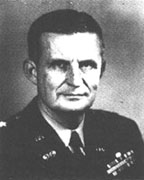Military Industrial Surrealism
 |
Suppose instead you found a way to spike the city's water supply or to release a hallucinogen in aerosol form. For twelve to twenty-four hours all the people in the vicinity would be hopelessly giddy, vertiginous, spaced-out. Those under the spell of madness gas would be incapable of raising a whimper of protest while American troops established themselves on what was once forbidden turf. Victory would be a foregone conclusion, as smooth and effortless as the French army in The King of Hearts strolling into a town inhabited solely by asylum inmates.
Yes, wouldn't it be nice to take the teeth out of war and at the same time make its result so final! Just blow their minds, move in, and take over; it was that simple--or so Creasy claimed. As soon as the citizenry recovered from their relatively brief stint in the ozone, everyone would return to a nine-to-five schedule. There'd be no fatalities and, except for a few borderline psychotics pushed over the edge by the drug, no sick or wounded needing medical care. Most important, the local economy would have suffered no significant setback.
Psychochemical weapons, Creasy argued, offered the most humane way of conducting the dirty business of warfare. He preached a new military gospel: war without death. An era of bloodless combat was just around the proverbial corner. There was only one problem. The sadly misinformed lay public and their elected officials harbored a knee-ierk aversion to chemical weapons.
In 1959 Creasy testified abefore the House Committee on Science and Astronautics. He explained to the bewildered congressmen how a psychochemical "attacks the sensory, perception, and nerve centers of the body...discombobulating them...Your hearing might be affected, your sight might be affected, your physical balance might be affected." Moreover, these drugs worked so swiftly that people wouldn't even know they'd been hit.
Representative James Fulton (R-Pa.) was disturbed by Creasy's remarks. He wondered if some foreign power might already be subjecting people in the United States to such agents. "How can we determine it?" Fulton asked. "What is the test to see whether we are already being subjected to them? Are we under it now?...Are we the rabbits and the guinea pigs?...How are we to know?" Simple, said Creasy. If LSD or a related drug was administered to members of Congress, "we could possibly have you dancing on the desks, or shouting Communist speeches." Fulton gasped. "Have you ever tried them on Congress?" "I can assure you of one thing," said Creasy. "The Chemical Corps of the Army has not found it necessary to do it up until now."
An excerpt from Acid Dreams: The Complete Social History of
LSD: The CIA, the Sixties and Beyond, by Martin A. Lee and Bruce Shlain
(Grove Press)
Copyright 1985 by Martin A. Lee and Bruce Shlain
The Acid Dreams web site: http://www.levity.com/aciddreams/